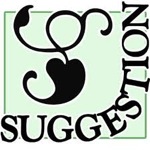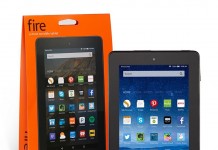
Our own Joanna sent me this email her sister sent to Amazon and I thought it worth sharing with you. Some personal information has been deleted.
Joanna said something interesting, herself, in her transmittal to me: I liked the one about allowing users to somehow coach or over-ride the text to speech; I too have had issues with proper names being mispronounced. She told me she is getting her daughter, who struggles with reading, to put in more book time with the Kindle using the text to speech feature; I think this is definitely a niche market untapped by the ebook world. And like me, she is putting work stuff on it 🙂
Blockquotes omitted:
Hi, there,
First of all, I have to say that I love my new Kindle 3, which I received as a birthday gift last week. I’ve been a fan of e-books for a long time (my first purchase on what is now eReader.com was made in 2001, and I’ve read e-books on various PalmOS devices, my iPod Touch, my Motorola Droid, my laptop, and now my Kindle ever since), and I think the Kindle 3 is really the first device I’ve seen that realizes the promise of e-books. So, keep up the good work!
Also, by way of background, I am an avid reader, but also an author (with one self-published book available via the Amazon DTP, and more coming). I am also a published freelance photojournalist, with more than 300 published newspaper and magazine articles. My work has appeared in The Writer, Rangefinder, Paralegal Today, and scores of local and regional publications. So, when I view the Kindle, it’s through the eyes of both a reader and an author.
That said, I do have a few suggestions on how to make the Kindle even better:
1. Better sorting options. The ideal sorting I’d like for my device is “By Author, but with collections sorted alphabetically at the top of the list.” Sorting by collections filters the collections, alphabetically, to the top, but all books that aren’t part of a collection are sorted by last access time rather than by author or title.
2. Ability for authors/publishers to provide “hints” to the text-to-speech subsystem. And, ideally, the ability for users to do so as well. I know this is non-trivial to do, but here’s an example.
I frequently read published court opinions in my work as a paralegal, and to save paper I’ve been downloading them to my Kindle (via the @kindle.com email thing and PDF>AZW conversion). Since I’m in California, court opinions often contain embedded citations, of the form “142 Cal.App.4th 123” which refers to the California Appellate Reporter. However, when I enable text-to-speech on such a document, it reads the text “Cal.” as “calories”, rendering the citation as something like “142 Calories App Fourth 123”, which is confusing. It would be nice if I could tell the text-to-speech system that it should pronounce “Cal.App” as “Cal App”, or “California Appellate Reporter”.
Similarly, it would be handy if the authors or publishers of a book could tell the text-to-speech system how names or other non-standard words should be pronounced. For example, I was listening to a book which contains the last name “Fuselier”, which the Kindle pronounces “FUSE-i-leer”, but which the text of the book makes clear should be prounounced “FUSE-i-lay”. It would be nice if the publisher could embed something in the book to let the text-to-speech engine know this.
3. Experimental features. Since the Kindle’s “Experimental” page asks for feedback on the web browser etc., here’s my feedback: A web browser is handy to the extent that it enables Wikipedia/etc. access from the Kindle and to the extent it’s necessary for the Facebook and Twitter integration. But, beyond that, I personally don’t think web browsing and such are important to the device at all. The Kindle is an e-reader, and it does that job exceptionally well. If I want a general-purpose tablet computer, I’ll buy an iPad or one of the many Android tablets that seem to be coming out.
What I want in an e-reader is exactly what the Kindle delivers: A light, fast device that’s optimized for e-reading, with great battery life and a killer display. The Kindle 3 is a grand-slam home run in my book, and I’d hate to see Amazon deviate from that by turning the Kindle into an also-ran Android mini-tablet like the nook folks seem to be doing with the nook color. If you guys want to make a more general-purpose tablet as well, have at it, but in my view such a product would be an addition to, rather than a replacement for, the Kindle product line.
Again, I am thrilled to death with my K3, and these suggestions are just meant to highlight places the Kindle could do even better. If anybody on the Kindle product team would like clarification or additional information about these suggestions or my impressions of the Kindle, I would be more than happy to provide them. [omitted]
Keep up the good work, so I can keep reading!
Warmly,
Tammy

































The non-distractive legibility of electrophoric display is also well suited to augment the touch screen phone.
Phones, like e-readers, are used in well lit environments and a small e-ink cell with non-reflective screen would be perfect for calendar info, caller id and text messages. Prospects for larger screen e-ink devices are still uncertain as they assimilate evermore refined mimicry of print at the same time that screen readers adapt to evermore mixed media, touch navigation and non-linear content.
To that, I would add:
Restore the ability to list only periodicals or only books or only personal items
Restore the number row to the keyboard or at least print the numbers on or above the Alt+letter keys
Make the batter user-changeable, or at least give me a place to get it changed while I wait, like a watch
Provide a toggle key to show/hide the book title in the header
Provide an easy interface to report problems with the book (like bad formatting)
Offer a sliding scale of reading speeds for the text-to-speech instead of just 3 speeds
Most importantly: improve the keyboard. I tend to annotate quite a bit, and the keys are finicky, inaccurate and stiff. Also, I use the Komma and the numbers more often than Amazon must have thought.
Second: I want a full screen mode (i.e., no stats and nav bar) and half-page zoom for reading comics.
Third: I read a lot of free books, and I would like to be able to edit/correct the meta data. Also, I want to have access to rating and comments on the reader.
Fourth: display the time somewhere, for instance using a hotkey, or in the menu.
Oh boy, how is one supposed to read this with out paragraphs or any sort of formatting?!
Paul, RSS feeds of teleread doesn’t include any text but the headers, and when teleread is rendered with Chrome for windows, Carriage returns doesn’t appear.
I’d add that Kindles need to be able to sync user notes and the last page read between platforms for any mobi book and not just those acquired from Amazon. Others mentioned Gutenberg titles. I’m more interested in being able to synch my own and work-related documents. And I suspect users would be happy if, to save Amazon cellular charges, these features were limited to USB and WiFi transfers.